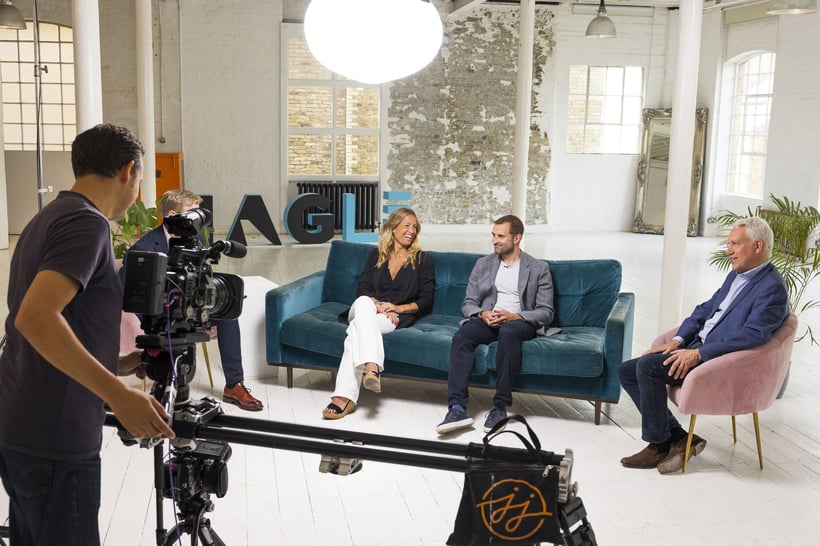5 things to know about customer loyalty in 2023
To foster customer loyalty, encouraging an emotional connection to the brand is the most important place to start.
These efforts, when done well, pay off. According to a recent report from CapGemini, emotionally engaged consumers spend up to two times more on brands they feel loyalty towards. Indeed, when companies focus on building a positive emotional connection, growth often happens in double digits.
.png?width=814&height=543&name=MicrosoftTeams-image%20(21).png)
Loyalty is one of the most effective commercial levers a business can pull – and one of the most effective ways to implement loyalty is through a programme. As noted in a paper published by McKinsey, “[these] programmes can create a significant sales boost, incrementally spiking revenue by activating previously dormant customer loyalty.”
Companies of all sizes and sectors have taken note, and the result has been an explosion in customer loyalty programmes. For one point of context, consider that in 2004, 50% of European consumers belonged to at least one grocery loyalty scheme. By 2011, that number had reached 90%.
So: How do we curate programmes that make customers feel emotionally (and authentically) connected to your brand?
To answer this question, here are the five things you need to know about customer loyalty programmes in 2023.
1. Curating a successful customer loyalty programme takes time
Curating a successful loyalty programme takes time. There’s a lot that goes into creating the right balance, so that your programme is valuable for both your customers and your organisation.
Speaking generally, by taking time to get to know your customers and what’s important to them, you put yourself in a much better position to create relevant and appealing programmes, that drive loyalty in the long-term.
In one brand loyalty survey, 79% of respondents said that loyalty programmes “make me more likely to continue doing business with [the] brand”.
The more rewarding interacting with your brand feels for consumers, the more likely they are to talk about it. Effective programmes attract new members, but also create brand advocates, and, in many cases, most of these brand-loyal customers will recommend the brand to a friend.
2. Classifying which customers are loyal reaps rewards
When customers become part of a loyalty programme, the ultimate goal is to encourage sustained loyalty and to get members to engage with the programme.
To do this best, you should consider categorising customers.
Rather than treating each transaction in silo, it’s helpful to forecast what a loyal customer is likely to purchase in their lifetime. Are they collecting with multiple brands? What kinds of travel purchases are they making? What ways do they prefer to collect points?
Whn you have the answers to these questions, you can begin placing your customers into different segments, which are likely to behave in a similar way.
As noted by Microsoft, “predicting which customers may abandon your brand allows you to focus your retention engagements on desired and higher-value customers and on increasing their loyalty.”
If you can predict points at which these customers are likely to ‘drop off,” then you can better avoid them.
Using segmentation in this case can provide a great deal of value in answering some of the above questions around how members are collecting, what purchases they’re making and how they prefer to collect points. The best tools to make these determinations include A.I. and machine learning, which can forecast customer behaviour based on reliable models. Using these technologies will only accelerate how we understand our consumers moving forward, allowing us to make loyalty work better for them and for us too.
In research conducted by The Harvard Business Review, scientists have used customer experience tools to dig deeper into customer reviews. Using linguistics-based natural language processing (NLP) to extract and map keywords in customer reviews, these tools were able to associate these keywords with certain contexts and emotions.
3. Understanding the different types of loyalty is key
In our recent roundtable, Finnbar Cornwall from Google identified two different types of loyalty. These two types are: attitudinal loyalty and behavioural loyalty.
When asked what brands they prefer, consumers might name a few companies that they deem as favourites – attitudinal loyalty. Behavioural loyalty, in contrast, is showing their affinity for a brand or product by making repeated, consistent purchases.
“The holy grail that everyone is aiming for is behavioural loyalty,” says Finnbar.
A good experience will build attitudinal loyalty, allowing brands to be top of mind for consumers and will ensure they have a positive association with your brand.
According to Finnbar, the ingredients to driving that consistent spend that comes through behavioural loyalty fall within the following three categories: relevant content, appealing deals, and all-round engagement. As sign posted at various points, our recent roundtable takes a more in depth look at these components. You can watch the full roundtable here.

4. Building trust fosters customer loyalty
81% of consumers want to form a relationship with a brand. To form any relationship, it’s important to build trust.
In any reward programme, the criteria and terms must be clear. Let people know what they’re getting into, let them know what to expect and let them know the range of possibilities available.
You need to set expectations with your customers but also be sure to meet them. Live your brand values. When consumers see that you mean what you say and stick to it, you build trust.
Another way to build trust is to provide customers a way to provide feedback on a convenient channel. Making the brand accessible – and communicating on a public forum – can help tremendously to build affinity.
(Read more about how we adapt to meet what members’ needs.)
81% of consumers want to form a relationship with a brand.
5. Customer loyalty begins with excitement – and engagement.
You’re probably tired of hearing the word “engagement” in a marketing context. But if you can pardon the buzzword, you should consider it as a key pillar of building loyalty.
Whether this be through email comms, social media, or direct mail, get talking to your members; tell them what’s new in the organisation, share cool trends and relevant content based on their interests. Of course, the real engagement comes from great rewards that are not only appealing but also easy to use. This engagement is the kind that incentivises your members and keeps them coming back.
Like in any relationship, loyalty between customer and company grows over time, but only if it is properly fostered – and if the rewards on offer pack emotional appeal.
As discussed in our roundtable, a successful long-term strategy should be focused on building an emotional connection between a consumer and the brand. It’s about incentivising your members, with an eye on relevance, and creating new offerings to answer new preferences.
When you succeed, you create a connection that makes people genuinely excited to engage with your brand.
A note from IAG Loyalty
In our more than 30-year history, we’ve accrued 40 million members. Year by year we’ve gotten to know our members and are continually pushing the boundaries for what loyalty can look like.
If you’d like to learn more from IAGL and read more on some of the tried and tested ways to do loyalty, you can read this information here.
If you have any questions, don’t hesitate to get in touch.
related
articles
.png?width=352&name=MicrosoftTeams-image%20(1).png)
When it comes to loyalty programmes, we speak extensively about the importance of dealing with...

It’s every brand’s dream to gain a community of loyal customers. Brands are constantly looking for...

In today's hyper-competitive market, brands are constantly seeking innovative ways to cultivate...






